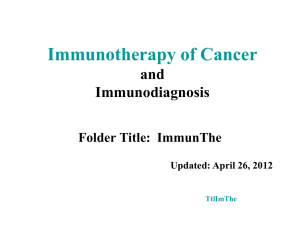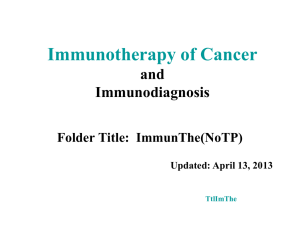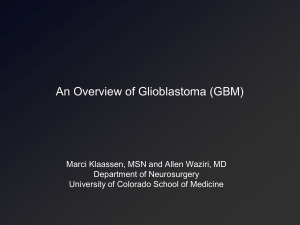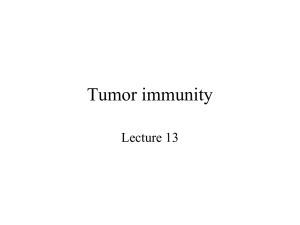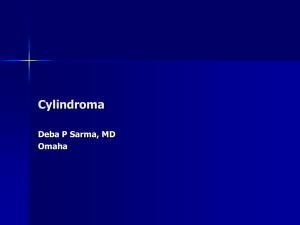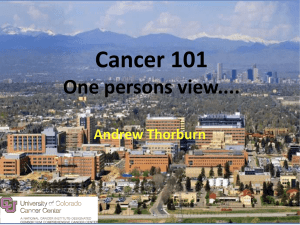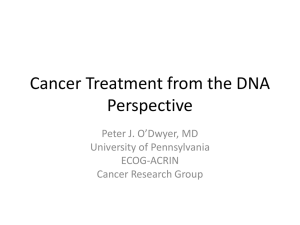Cancer Immunology
advertisement
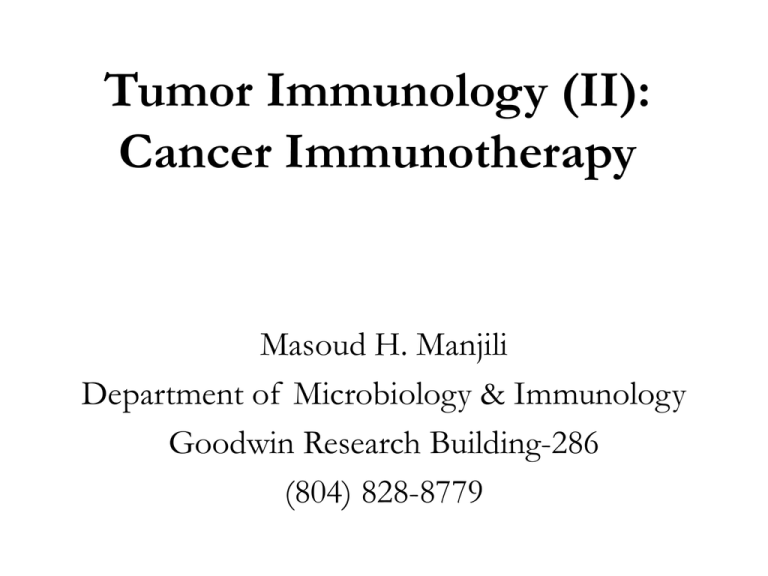
Tumor Immunology (II): Cancer Immunotherapy Masoud H. Manjili Department of Microbiology & Immunology Goodwin Research Building-286 (804) 828-8779 Learning Objective Learn how to harness the immune system to kill tumors: immunotherapy Cancer Immunotherapy How to kill tumors without killing normal cells? To induce an immune response against the tumor that would discriminate between the tumor and normal cells: Adaptive immunity Tumor antigens Tumor Specific Antigens (TSA) Are only found on tumors As a result of point mutations or gene rearrangement derive from viral antigens Tumor Associated Antigens (TAA) Found on both normal and tumor cells, but are overexpressed on cancer cells Developmental antigens which become derepressed. (CEA) Differentiation antigens are tissue specific Altered modification of a protein could be an antigen Tumor antigens Tumor antigens Immunotherapy Adoptive T cell therapy (AIT) Passive immunotherapy using antibodies Active-specific immunotherapy by using vaccines AIT + IL-2 against melanoma AIT + IL-2 against melanoma Before After Transfer tumor-specific T cell receptor genes using retroviral vectors into patients’ T cell before AIT AIT for B cell lymphoma Passive immunotherapy Passive immunotherapy Passive immunotherapy: mAbs Herceptin: anti-HER-2/neu in breast cancer patients Rituximab: anti-CD20 in patients with non-Hodgkin’s lymphoma Bevacizumab: anti-VEGF in patients with advanced colorectal cancer Limitations: clearance by soluble Ags, antigenic variation of the tumor, inefficient killing or penetration into the tumor mass Passive immunotherapy: immunotoxins Anti-CD22 Ab fused to a fragment of Pseudomonas toxin in patients with B-cell leukemia (hairy-cell leukemia) Passive immunotherapy: druglinked antibodies Anti-CD20 antibodies linked to a radioisotope yttrium-90 in patients with refractory B-cell lymphoma Antibody-directed enzyme/pro-drug therapy (ADEPT): Antibodies linked to an enzyme that metabolizes a nontoxic pro-drug to the active cytotoxic drug Vaccination: cross presentation of tumor antigens by APCs T cell activation T cell killer function Signal I T cells Tumor Signal II Vaccination Cell-based vaccines using irradiated tumors with adjuvants such as BCG Peptide- and protein-based vaccines DNA vaccines Vaccination: increase immunogenicity of tumor cells Vaccination HPV vaccine for the prevention of cervical cancer Oncophage (gp96): a tumor-derived heat shock protein vaccine against kidney cancer and melanoma Vaccination: Oncophage Summary Manipulation of tumors for the expression of new antigens is a promising approach for the induction of anti-tumor immune responses Vaccines may be effective against residual tumors but AIT and passive immunotherapy have potentials for the treatment of primary tumors Suggested Reading Janeway’s Immunobiology, 7th edition: Chapter 15; Pgs. 672-678


